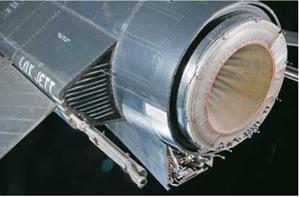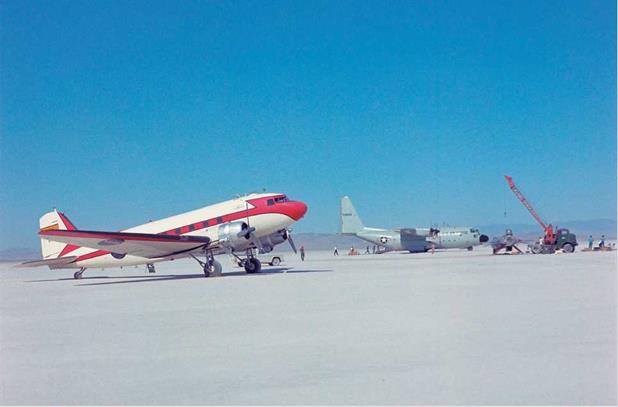THE ENGINES
Rocket engines carry their own fuel and oxidizer and have large thrust, and by launching at high altitude the airplane will encounter small drag. This will enable the aircraft to quickly reach hypersonic speeds and altitudes where it can obtain the desired data.
The design called for the XLR 99 engine, similar to the XLR11 engines that powered the X-1 airplane past Mach 1. The XLR99 had a thrust at sea level of 57,000 pounds, while the XLR11 had a thrust of 6,000 pounds in 1,500-pound increments. The scaling upward of
the engine was significant. This new engine was throttleable to about 30 percent of maximum thrust. Unfortunately, the engine shut down prematurely at partial thrust, so almost all flights were conducted at full thrust. It was later restricted to operate at a minimum of 43 percent max because of unwanted shutdown occurring followed by an inability to restart. The dry weight of the engine is 915 pounds.
The fuel for the XLR99 is anhydrous ammonia, with liquid oxygen as the oxidizer. The specific impulse of this fuel is 230 seconds at sea level and 276 seconds at 100,000 feet altitude. Specific impulse is defined as the thrust of the engine per

|
|
|

|
|
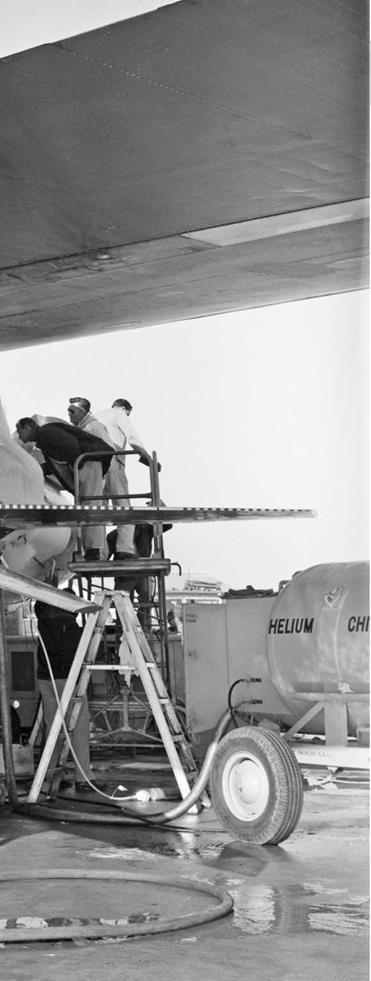 Rear view of the loading process for mounting the X-15 under the wing of the B-52. USAF, Air Force Flight Test Center History Office, Edwards Air Force Base
Rear view of the loading process for mounting the X-15 under the wing of the B-52. USAF, Air Force Flight Test Center History Office, Edwards Air Force Base
weight of propellant used per second, and it is a measure of the efficiency of the fuel.
The engines were developed and supplied by Reaction Motors, Inc. (RMI), through NACA and the USAF as government-furnished equipment (GFE). The XLR99 was not ready in time for the X-15’s first flight, and a drop flight without an engine was performed to learn about the airplane’s flying and handling qualities. Since the XLR99 still wasn’t ready, the next series of flights were performed using two XLR11 engines. The XLR11 had been used singly at 6,000 pounds thrust in the X-1 and X-1A series of flights. The two XLR11s that were used in the early X-15 flights had only 12,000 pounds of thrust, much less than the 57,000 that would be available later in the XLR99. Even with the reduced acceleration, the two XLR11s enabled flights through the transonic speeds and to a supersonic speed of about a Mach number of 3. The two smaller engines were mounted in a cradle that was then mounted in the same attachments used for the XLR99. Both configurations used the same fuel tanks, even though the fuel used for the XLR11 was water alcohol instead of anhydrous ammonia. After the twenty-fifth flight, all X-15 flights used the XLR99 engine.
|
X-15 rocket nozzle exit. NASM |
61
|
The advantage of flying first with a proven engine was to ensure that both the airplane and the engine were not new and untested. It also prevented a delay in the program, which allowed continuity in flight testing.
RMI, which won a competition that included Bell Aircraft, and Aerojet encountered several problems in developing the new engine: leaks, pumps, fuel lines, vibration, liner failures, etc.
Costs increased, which delayed schedules. Scott Crossfield, the first X-15 test pilot, did not want to proceed with a temporary engine, preferring to wait for the XLR99. Fearing that the new engine would not be completed, both NAA Vice President Harrison Storms and Program Manager Charlie Feltz supported using the XLR11. Said Feltz, “I’ve been a little concerned about busting into space all at once with both a brand new
airplane and a brand new untried engine. . . . We’re trying to crack space, with a new pressure suit, reentry, landing, new metal, everything at once. I’ve got a real good buddy who’s going to be flying that airplane for the first time, and I’d just as soon have him around for a while.” [citation: Dennis Jenkins, X-15: Extending the Frontiers of Flight, NASA SP-2007-562, 1967, p. 203]
The engine was reliable, in part because it had thirty-seven dedicated people in the engine – maintenance shop at Edwards Air Force Base who obtained good results with the engine; 165 out of 169 successful engine operations indicated a
reliability of 97.6 percent. The total engine costs were initially estimated to be about $12.2 million, as originally bid. Because of many increases in scope during the design, the final costs were about $300 million.
Author Dennis Jenkins noted, “In retrospect the engine still casts a favorable impression.
The XLR99 pushed the state of the art further than any engine of its era, yet there were no catastrophic failures in flight or on the ground. There were, however, many minor design and manufacturing deficiencies. . . .”
X-15 Flight Summary
|
X-15 Pilots |
Number of |
Maximum Mach |
Maximum Altitude |
|
Flights |
Number Achieved |
Achieved (feet) |
|
|
Scott Crossfield |
14 |
2.97 |
86,116 |
|
Joseph A. Walker |
25 |
5.92 |
354,200 |
|
Robert M. White |
16 |
6.04 |
314,750 |
|
Forest S. Peterson |
5 |
5.3 |
101,800 |
|
John B. McKay |
29 |
5.65 |
295,600 |
|
Robert A. Rushworth |
34 |
6.06 |
285,000 |
|
Neil A. Armstrong |
7 |
5.74 |
207,500 |
|
Joe H. Engle |
16 |
5.71 |
280,600 |
|
Milton O. Thompson |
14 |
5.48 |
214,100 |
|
William J. Knight |
16 |
6.7 |
280,500 |
|
William H. Dana |
16 |
5.53 |
306,950 |
|
Michael J. Adams |
7 |
5.59 |
266,000 |
|
Total Flights |
199 |
Total Flight Time: 30 hours, 13 minutes, 49.4 seconds Total Distance Flown: 41, 763.8 statute miles
|
Times above Mach: |
1 |
2 |
3 |
4 |
5 |
6 |
|
Hrs:Mins:Secs: (cumulative) |
18:16:28 |
12:10:44 |
8:51:33 |
5:58:52 |
1:25:33 |
0:1:18 |
![]()

 Front view of the X-15. USAF, Air Force Flight Test Center History Office, Edwards Air Force Base
Front view of the X-15. USAF, Air Force Flight Test Center History Office, Edwards Air Force Base
![]()

X-15 in flight. USAF, Air Force Flight Test Center History Office, Edwards Air Force Base
|
|
|
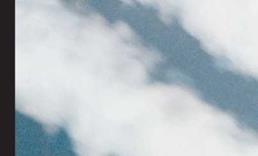
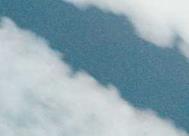
![]()
For the X-15 program to be a success,
the airplane and the pilots had to have a home—a physical facility for servicing the aircraft and a takeoff and landing area. Each flight required teams of support people on the ground as well as other pilots and airplanes in the air. All of these constituted the test arena.
EDWARDS AIR FORCE BASE
The X-15 flight tests occurred at Edwards Air Force Base, located about 100 miles northeast of Los Angeles. It is located on Rogers Dry Lake, a 44-mile-long pluvial lake in the Mojave Desert, which is the world’s largest pluvial lake (sometimes called paleolakes because they are caused by heavy rain during periods of glaciation). This dry lake maintains a smooth surface because winds consistently sweep the winter rains back and forth across the lakebed. Most of the year, the lakebed is dry and flat with a variation of height of only about 18 inches from one end to the other.
|
|
|
► X-15 run-up area at Edwards Air Force Base, 1958. USAF, Air Force Flight Test Center History Office, Edwards Air Force Base
There are a number of dry lakes in this high desert region, some of which made suitable alternate sites for the emergency landings that might occur, and occasionally did occur, during the flight-testing program. The lakebed had to be smooth enough and hard enough to support an airplane that landed on skids, without digging in and causing an accident, but also long enough for a normal landing. The maximum travel distance from launch to landing was set by the high – altitude flight, where the glide from altitude to landing required a 300-mile distance from launch to Edwards Air Force Base. The alternate fields selected were located within glide range at launch
along the path from the launch site to Rogers Dry Lake at Edwards.
The U. S. Army Air Force had used Rogers Dry Lake, then known as Muroc, since the 1930s. During World War II, the Army used the site for flight testing. The advantages of the site include the long, effective runway offered by the lakebed and the 15,000-foot concrete runway that had been built during the war. Other advantages that Rogers afforded were the good weather that enabled many flying days and the security of being essentially in the middle of nowhere, both of which ensured control over the flights. It also provided security for classified aircraft.
While Air Force personnel maintained tight security during the X-1 and X-2 flights, they were more relaxed with the X-15, primarily because it was a research airplane, not intended for combat. Edwards Air Force Base was where all the new military airplanes were tested, including airplanes of super-secret nature, earmarked for eventual combat. Thus, security was at a maximum. By the time of the X-15, however, research airplanes were viewed as just that, research tools. They were thus lower in the hierarchy of security. Most details of the X-15 airplane, the flight tests, and the data were not kept secret. Security for the X-15 was more in the nature of “watchman” and “housekeeping.” Those responsible made certain that no unauthorized people had access to the airplane, that tools were not left in the cockpit by accident, etc.
The first U. S. jet airplane, the Bell P-59, was tested on October 2, 1942, at Muroc by Bell’s chief
test pilot, Bob Stanley. When the X-1 outgrew the initial test site at Pinecastle, Florida, the Air Force selected Rogers Dry Lake for its subsequent flights. There, on October 14, 1947, Chuck Yeager flew the X-1 to the first supersonic flight, reaching a Mach number of 1.06 at 43,000 feet altitude. The NACA High Speed Flight Section under Walter Williams, who was responsible for the X-1 testing, continued in the testing of the Douglas D-558-2 and the Bell X-2 rocket-propelled aircraft, as well as other aircraft flown for test purposes before the creation of the X-15. The site also boasted the presence of the USAF Test Pilot School, whose pilots and aircraft supported the X-15 test flights in many ways, including flying chase aircraft deployed along the X-15 flight path.
The area was known as the high desert because Edwards Air Force Base was at 2,500 feet altitude and the alternate fields ranged up to 5,700 feet. Landing at an altitude higher than sea level requires
|

|
|
DC-3 and C-130 support aircraft at Mud Lake. USAF, Air Force Flight Test Center History Office, Edwards Air Force Base
|
|
Flyover by the B-52. On the ground are the X-15, Piasecki X-21 helicopter, and ground support personnel and equipment. USAF, Air Force Flight Test Center History Office, Edwards Air Force Base
|
a longer ground distance, since the air is less dense; thus, speed at landing has to be higher. Decelerating to stopping from a higher speed at landing by necessity requires a longer landing distance.
On November 9, 1962, X-15 pilot John McKay embarked on a routine flight to reach a Mach number of 5.5 and an altitude of 125,000 feet. Though McKay’s flight plan called for full power, the engine was putting out only 35 percent power, and ground control directed McKay to shut off the engine and land at Mud Lake, one of the emergency landing sites. McKay jettisoned some of the remaining fuel as required by protocol, but the routine emergency landing was complicated when the flaps didn’t deflect downward to increase lift, resulting in a dangerously high-speed landing at 257 knots. This caused a failure to the main landing skid, which in turn caused the left wing and stabilizer to dig into the lakebed, flipping the X-15 upside down.
McKay jettisoned his canopy during this flip – over, but his helmet was the first thing to hit the ground. The rescue crew and the fire truck sped to
the airplane. Fumes from the crash prevented them from approaching, but the H-21 helicopter pilot used his rotor blades to blow the fumes coming from the anhydrous ammonia fuel that leaked from the aircraft, so that rescue could proceed. The rescue crew was able to dig the ground out from under McKay and extract him.
A C-130 arrived with paramedics and more rescue personnel, and they flew McKay to Edwards Air Force Base before tending to the damaged X-15. The emergency preparation and actions saved McKay’s life and showed the crucial importance of alternate fields and the support teams who staffed them.
The X-15 pilots did not want to land at these alternate fields. They were for emergencies only. Landings there were the same as those as at Edwards—dead-stick landings with no power to make adjustments for height or location during landing, nor to abort the landing approach and go around to try again. In his book At the Edge of Space: The X-15 Flight Program, Milt Thompson summed up the pilots’ preferences:

Rogers (dry lake) was where God intended man to land rocket airplanes. It was big. It had many different runways. It was hard.
It had no obstructions in any of the many approach paths. It had all of the essential emergency equipment. It was territory that we were intimately familiar with, and it had a lot of friendly people waiting there. In other words, it was home.












